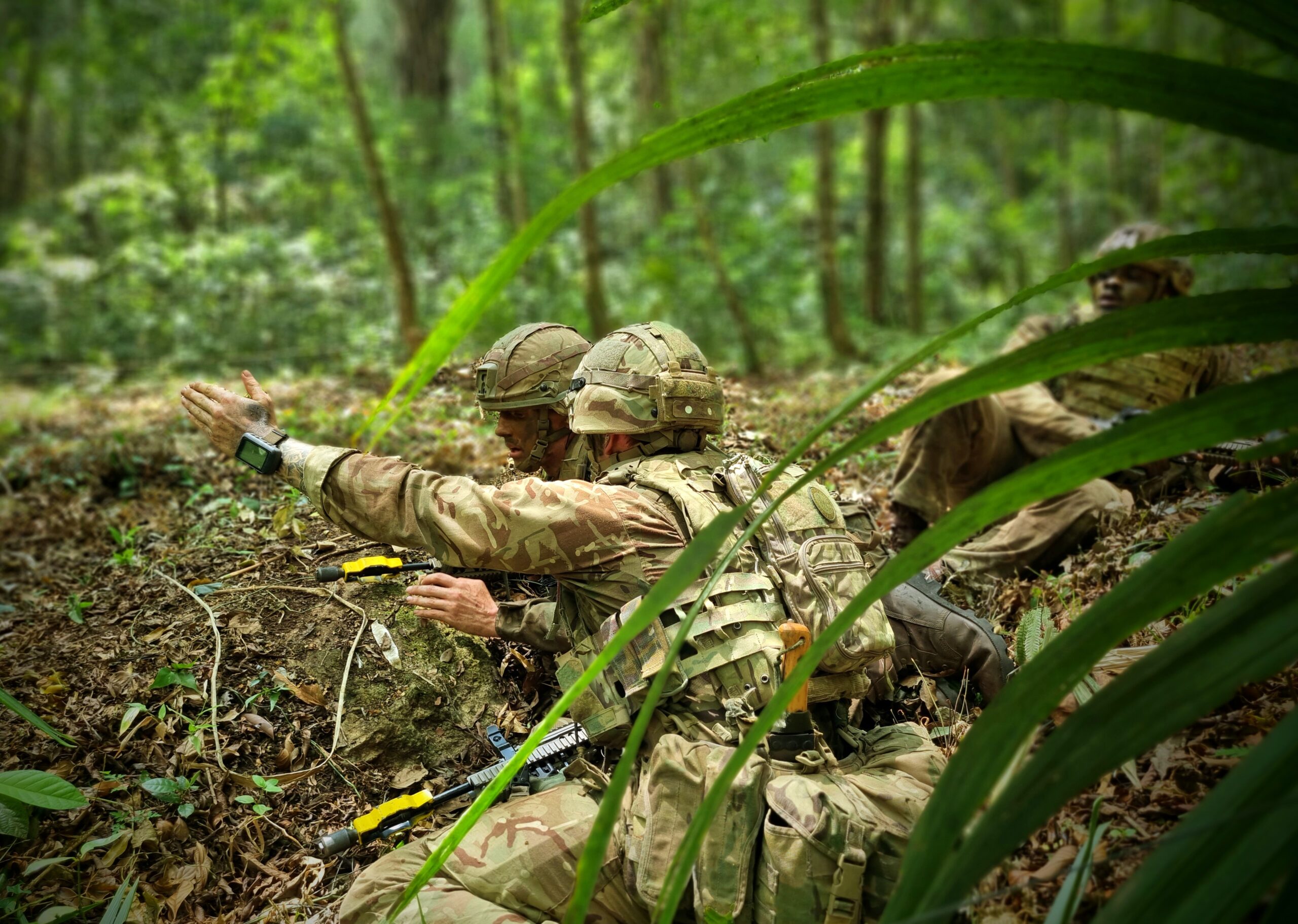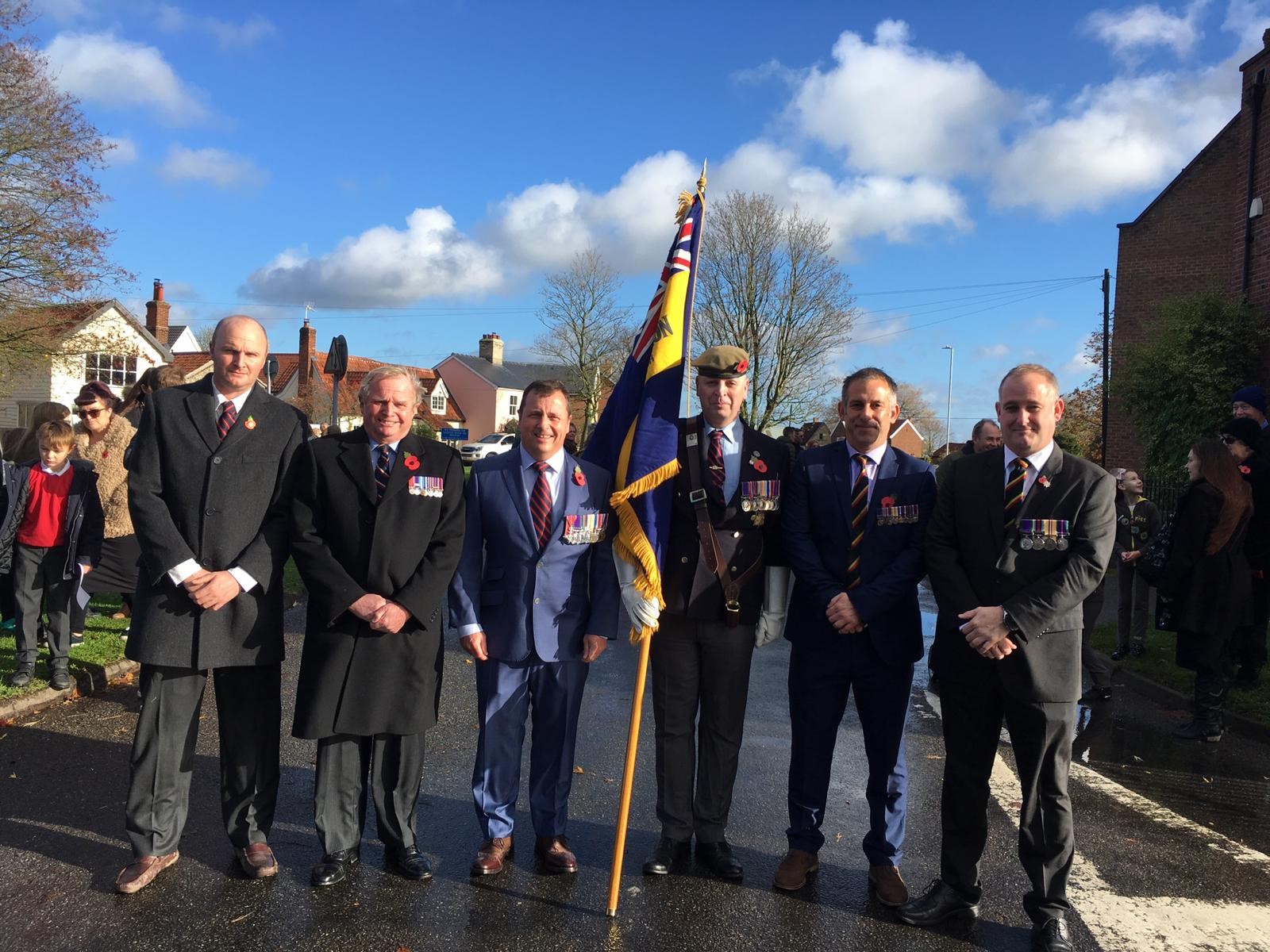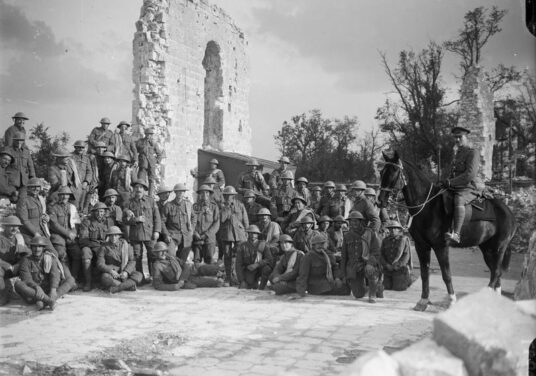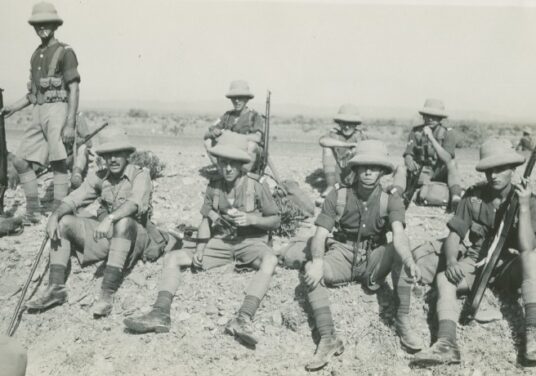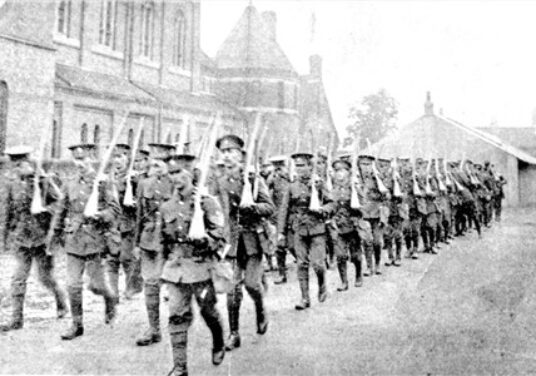Our Forebear Regiments
The Royal Norfolk Regiment
In 1685 Colonel Henry Cornwall raised a regiment which in 1751 formally became the 9th Regiment of Foot reflecting its seniority within the infantry. In 1782 it gained the county title of East Norfolk. A second battalion was raised in 1857. Under the Cardwell reforms of 1881 the regiment became the Norfolk Regiment, and in 1935 it was granted the prefix ‘Royal’.
After expansion to 20 battalions in World War 1 and to 9 in World War 2, subsequent cutbacks saw the disbandment of the 2nd Battalion in 1948, followed by amalgamation with the Suffolk Regiment on 29 August 1959 to form the 1st East Anglian Regiment.
The Royal Norfolk Regiment Museum, which includes the relevant archives, covers the history of the Regiment from 1685 and on through the amalgamations to show how the 9th of Foot’s traditions are still maintained within A (Norfolk) Company of the 1st Battalion of the Royal Anglian Regiment today.
The Royal Lincolnshire Regiment
In 1685 the Earl of Bath raised a regiment which in 1751 formally became the 10th Regiment of Foot reflecting its seniority within the infantry. In 1782 it gained the county title of North Lincolnshire. A second battalion was raised in 1857. Under the Cardwell reforms of 1881 the regiment became the Lincolnshire Regiment, and in 1946 it was granted the prefix ‘Royal’.
After expansion to 19 battalions in World War 1 and to 6 in World War 2, subsequent cutbacks saw the disbandment of the 2nd Battalion in 1948, followed by amalgamation with the Northamptonshire Regiment on 1 June 1960 to form the 2nd East Anglian Regiment.
The Royal Lincolnshire Regiment Museum covers the history of the Regiment from 1685 up to the amalgamation of 1960, but the 10th of Foot’s traditions are still maintained within A (Lincolnshire) Company of the 2nd Battalion of the Royal Anglian Regiment today.
The Suffolk Regiment
In 1685 Henry, 7th Duke of Norfolk, raised a regiment which in 1751 formally became the 12th Regiment of Foot reflecting its seniority within the infantry. In 1782 it gained the county title of East Suffolk. A second battalion was raised in 1857. Under the Cardwell reforms of 1881 the regiment became the Suffolk Regiment.
After expansion to 22 battalions in World War 1 and to 9 in World War 2, subsequent cutbacks saw the disbandment of the 2nd Battalion in 1948, followed by amalgamation with the Royal Norfolk Regiment on 29 August 1959 to form the 1st East Anglian Regiment.
The Suffolk Regiment Museum covers the history of the Regiment from 1685 up to the amalgamation of 1959, but the 12th of Foot’s traditions are still maintained within B (Suffolk) Company of the 1st Battalion of the Royal Anglian Regiment today.
The Bedfordshire & Hertfordshire Regiment
In 1688 Colonel Archibald Douglas raised a regiment which in 1751 formally became the 16th Regiment of Foot reflecting its seniority within the infantry. In 1782 it gained the county title of Buckinghamshire, but in 1809 the affiliation of the 16th was changed to Bedfordshire. A second battalion was raised in 1858. Under the Cardwell reforms of 1881 the regiment became the Bedfordshire Regiment. In 1919 the title was changed to the Bedfordshire and Hertfordshire Regiment.
After expansion to 18 battalions in World War 1 and to 8 in World War 2, subsequent cutbacks saw the disbandment of the 2nd Battalion in 1948, followed by amalgamation with the Essex Regiment on 2 June 1958 to form the 3rd East Anglian Regiment.
The Bedfordshire and Hertfordshire Regiment Museum covers the history of the Regiment from 1688 and on through the amalgamations to show how the traditions of the 16th of Foot are still maintained within D (Bedfordshire and Hertfordshire) Company of the 2nd Battalion of the Royal Anglian Regiment today.
The Royal Leicestershire Regiment
In 1688 Colonel Solomon Richards raised a regiment which in 1751 formally became the 17th Regiment of Foot reflecting its seniority within the infantry. In 1782 it gained the county title of Leicestershire. A second battalion was raised in 1858. Under the Cardwell reforms of 1881 the regiment became the Leicestershire Regiment, and in 1946 it was granted the prefix ‘Royal’.
After expansion to 19 battalions in World War 1 and to 6 in World War 2, subsequent cutbacks saw the disbandment of the 2nd Battalion in 1948. On 1 September 1964 the Regiment became the 4th Battalion of the newly-formed Royal Anglian Regiment.
The Royal Leicestershire Regiment Museum covers the history of the Regiment from 1688 and on through the amalgamations to show how the traditions of the 17th of Foot are still maintained within B (Leicestershire) Company of the 2nd Battalion of the Royal Anglian Regiment today.
The Essex Regiment
In 1741 Colonel James Long raised a regiment that was the 55th Regiment of Foot in order of seniority. Following changes in the Army, it became the 44th in seniority in 1748 and was formally given that number in 1751. In 1782 it gained the county title of East Essex.
Another regiment was raised by Lord Charles Manners in 1755 as the 58th Regiment of Foot, being renumbered as the 56th Regiment in 1757 again as a result of changes in the Army structure. In 1782 it gained the county title of West Essex.
The Cardwell reforms of 1881 brought the 44th and 56th together as, respectively, the 1st and 2nd Battalions of the Essex Regiment. After expansion to 31 battalions in World War 1 and to 12 in World War 2, subsequent cutbacks saw the disbandment of the 2nd Battalion in 1948, followed by amalgamation with the Bedfordshire and Hertfordshire Regiment on 2 June 1958 to form the 3rd East Anglian Regiment.
The Essex Regiment Museum, which includes the relevant archives, covers the history of the Regiment from 1741 and on through the amalgamations to show how the traditions of the 44th and 56th of Foot are still maintained within C (Essex) Company of the 1st Battalion of the Royal Anglian Regiment today.
The Northamptonshire Regiment
In 1741 Colonel James Cholmondley raised a regiment that was the 59th Regiment of Foot in order of seniority. Following changes in the Army, it became the 48th in seniority in 1748 and was formally given that number in 1751. In 1782 it gained the county title of Northamptonshire.
Another regiment was raised by Colonel Robert Anstruther in 1755 as the 60th Regiment of Foot, being renumbered as the 58th Regiment in 1757 again as a result of changes in the Army structure. In 1782 it gained the county title of Rutlandshire.
The Cardwell reforms of 1881 brought the 48th and 58th together as, respectively, the 1st and 2nd Battalions of the Northamptonshire Regiment. After expansion to 13 battalions in World War 1 and to 5 in World War 2, subsequent cutbacks saw the disbandment of the 2nd Battalion in 1948, followed by amalgamation with the Royal Lincolnshire Regiment on 1 June 1960 to form the 2nd East Anglian Regiment.
Northampton Museums and Art Gallery, which includes the relevant archives, covers the history of the Regiment from 1741 up to the amalgamation of 1960, but the traditions of the 48th and 58th of Foot are still maintained within C (Northamptonshire and Rutland) Company of the 2nd Battalion of the Royal Anglian Regiment today.
The Cambridgeshire Regiment
Although the regular 30th Regiment of Foot did have a connection with Cambridgeshire, that ceased under the Cardwell reforms of 1881. At the same time the various Volunteer units of the county were formed into a battalion of the Suffolk Regiment. In 1908 on the formation of the Territorial Force the title of that battalion was changed to 1st Battalion The Cambridgeshire Regiment, although it officially remained part of the Suffolk Regiment.
After expansion to 4 battalions in World War 1 and to 2 in World War 2, subsequent cutbacks saw the battalion transferred to the Royal Artillery for the period 1947-1956. On return to the infantry role the old title was resurrected, 1st Battalion The Cambridgeshire Regiment becoming one of the three TA battalions of the 1st East Anglian Regiment when it was formed on 29 August 1959.
The Cambridgeshire Regiment Collection, part of the Suffolk Regiment Museum, covers the history of the Regiment up to the TA reorganisations of 1967-1971, but its traditions are still maintained within D (Cambridgeshire) Company of the 1st Battalion of the Royal Anglian Regiment today.
The Hertfordshire Regiment
Although the regular 49th Regiment of Foot did have a connection with Hertfordshire, that ceased under the Cardwell reforms of 1881. In 1887 the various Volunteer units of the county were formed into two battalions of the Bedfordshire Regiment. In 1908 on the formation of the Territorial Force the two battalions were reduced to one, with the title of 1st Battalion The Hertfordshire Regiment, although it officially remained part of the Bedfordshire, later Bedfordshire and Hertfordshire, Regiment.
After expansion to 4 battalions in World War 1 and to 2 in World War 2, subsequent cutbacks saw the 1st Battalion The Hertfordshire Regiment becoming one of the four TA battalions of the 3rd East Anglian Regiment when it was formed on 2 June 1958. The Hertfordshire title was finally lost in 1961 when further TA reorganisation took place.
The Hertford Museum holds a small collection of items covering the history of the Regiment up to the TA reorganisations of 1967-1971, but its traditions are still maintained within D (Bedfordshire and Hertfordshire) Company of the 2nd Battalion of the Royal Anglian Regiment today.



